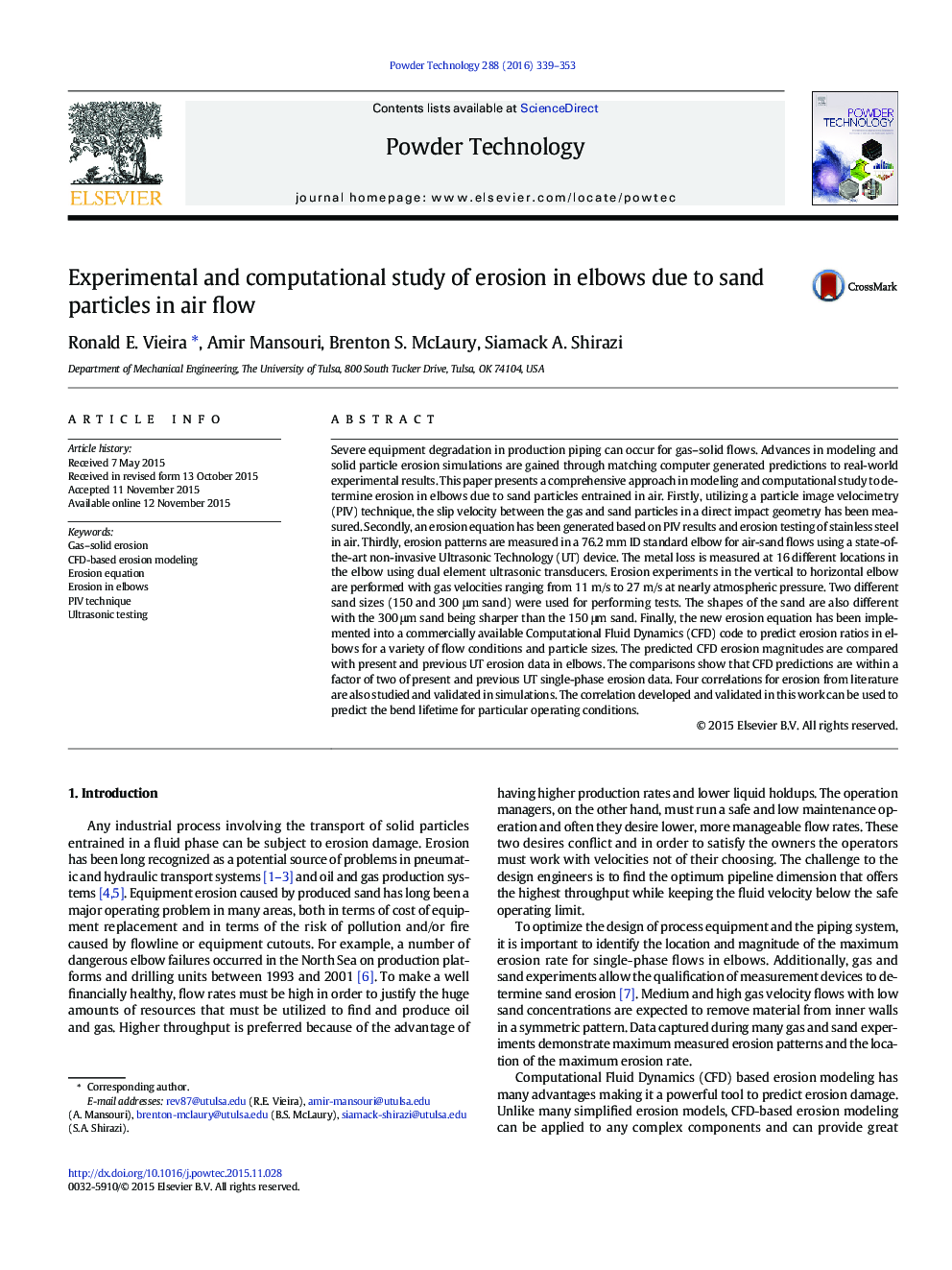| Article ID | Journal | Published Year | Pages | File Type |
|---|---|---|---|---|
| 235512 | Powder Technology | 2016 | 15 Pages |
•The slip velocity between the gas and sand particles has been measured using PIV.•An erosion equation has been generated based on PIV results and erosion testing.•Sand erosion is measured in a 76.2 mm ID standard elbow using ultrasonic probes.•Predicted CFD erosion magnitudes are compared with UT erosion data in elbows.•CFD predictions are within a factor of two of present and previous UT erosion data.
Severe equipment degradation in production piping can occur for gas–solid flows. Advances in modeling and solid particle erosion simulations are gained through matching computer generated predictions to real-world experimental results. This paper presents a comprehensive approach in modeling and computational study to determine erosion in elbows due to sand particles entrained in air. Firstly, utilizing a particle image velocimetry (PIV) technique, the slip velocity between the gas and sand particles in a direct impact geometry has been measured. Secondly, an erosion equation has been generated based on PIV results and erosion testing of stainless steel in air. Thirdly, erosion patterns are measured in a 76.2 mm ID standard elbow for air-sand flows using a state-of-the-art non-invasive Ultrasonic Technology (UT) device. The metal loss is measured at 16 different locations in the elbow using dual element ultrasonic transducers. Erosion experiments in the vertical to horizontal elbow are performed with gas velocities ranging from 11 m/s to 27 m/s at nearly atmospheric pressure. Two different sand sizes (150 and 300 μm sand) were used for performing tests. The shapes of the sand are also different with the 300 μm sand being sharper than the 150 μm sand. Finally, the new erosion equation has been implemented into a commercially available Computational Fluid Dynamics (CFD) code to predict erosion ratios in elbows for a variety of flow conditions and particle sizes. The predicted CFD erosion magnitudes are compared with present and previous UT erosion data in elbows. The comparisons show that CFD predictions are within a factor of two of present and previous UT single-phase erosion data. Four correlations for erosion from literature are also studied and validated in simulations. The correlation developed and validated in this work can be used to predict the bend lifetime for particular operating conditions.
Graphical abstractFigure optionsDownload full-size imageDownload as PowerPoint slide
